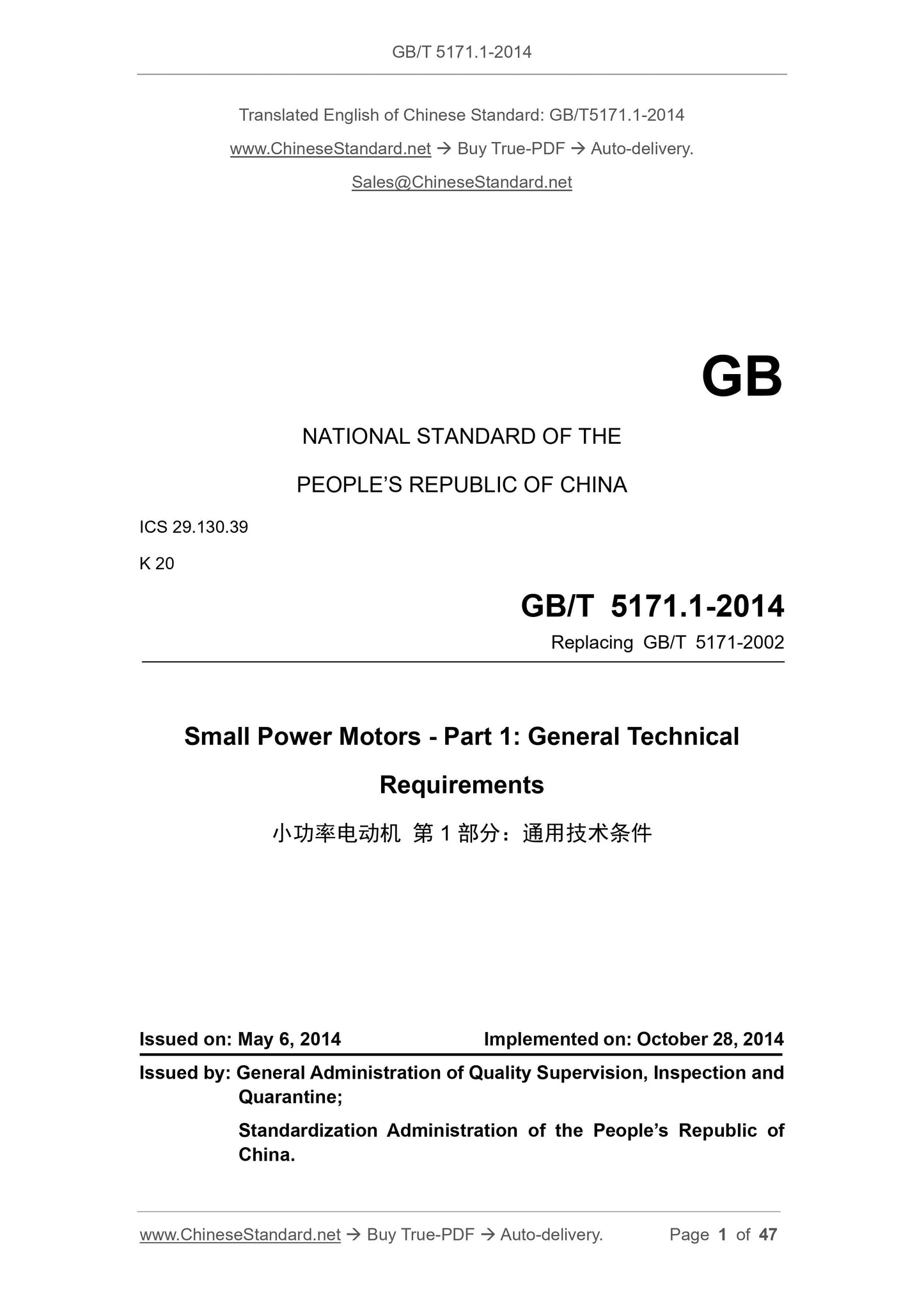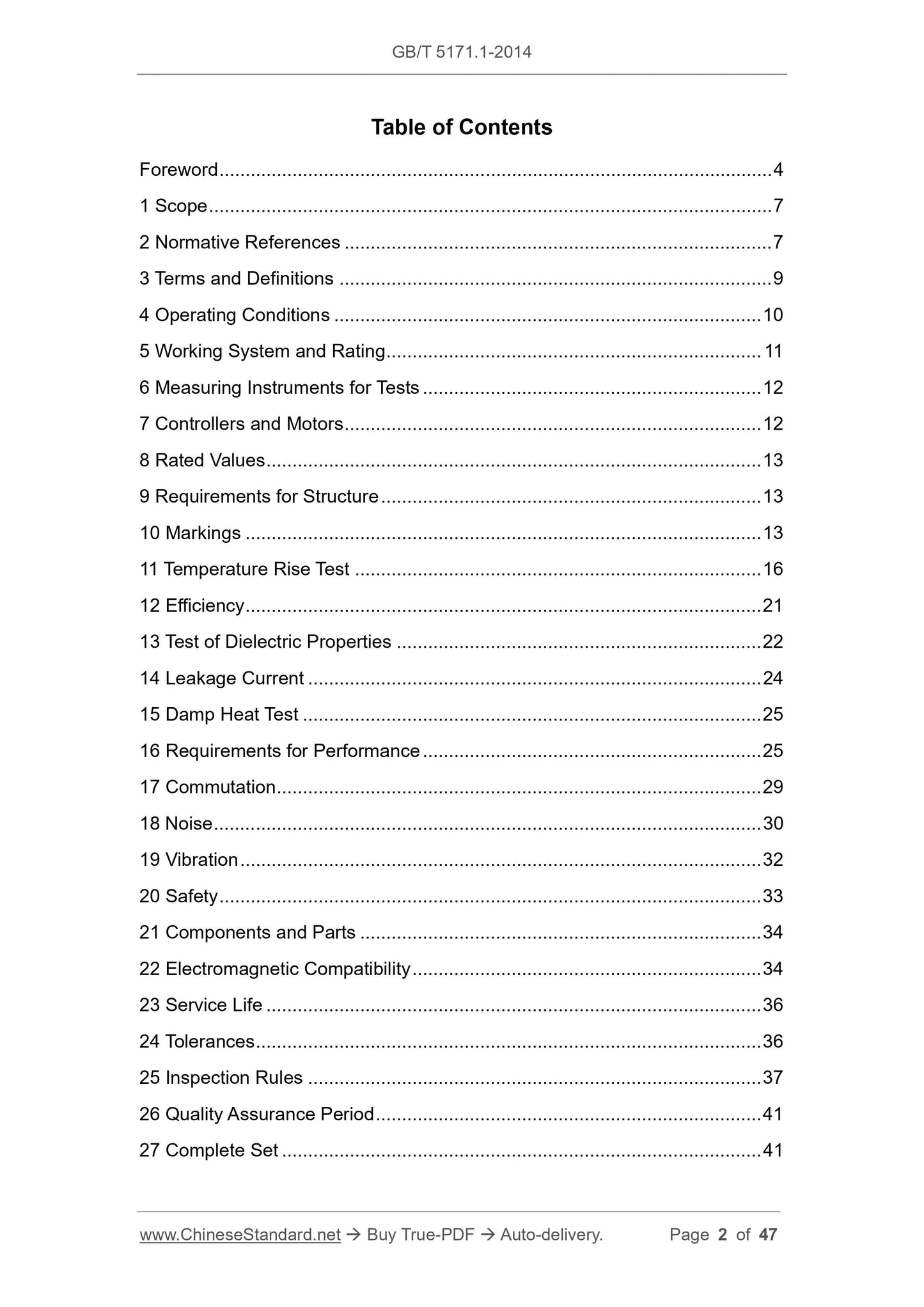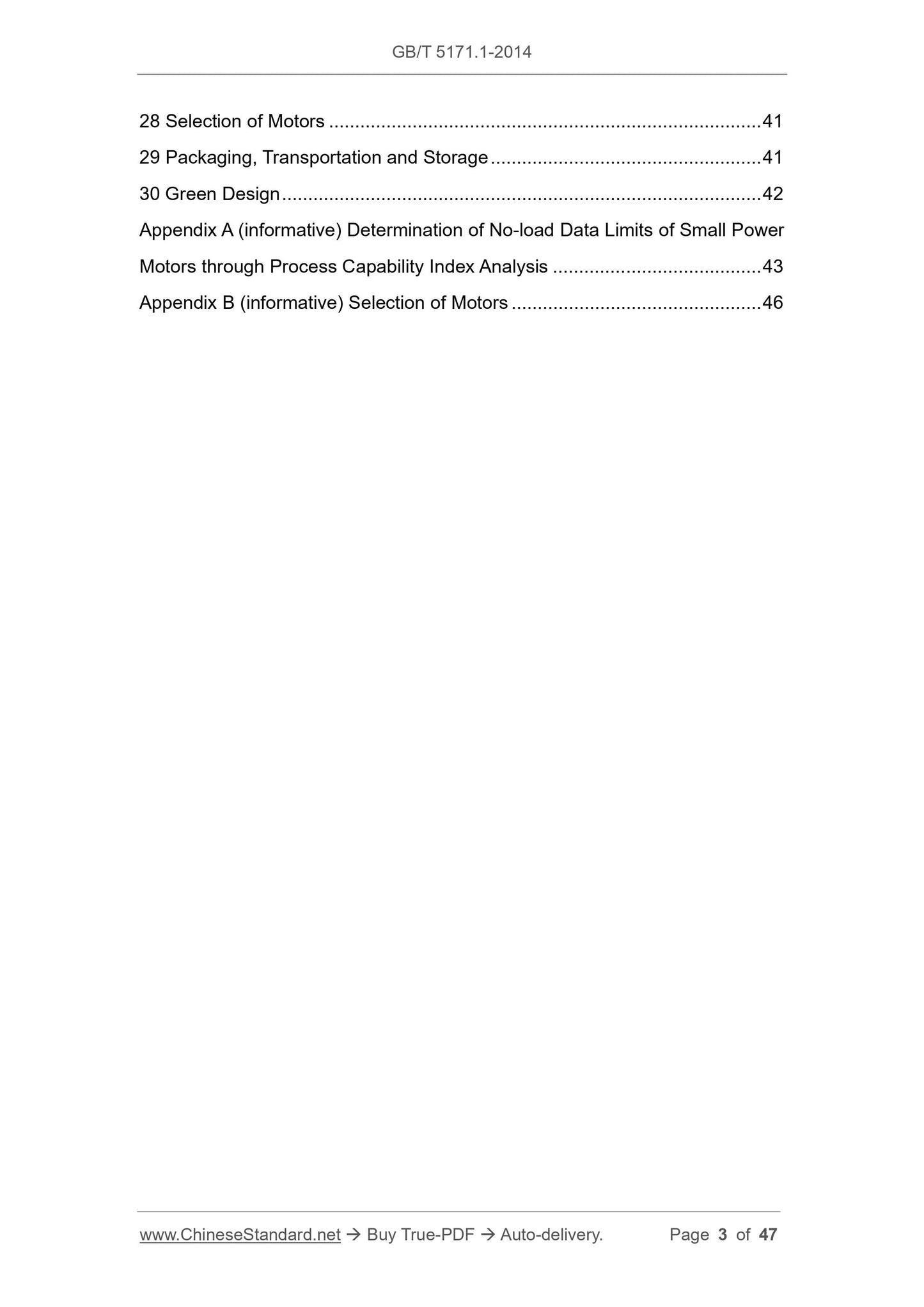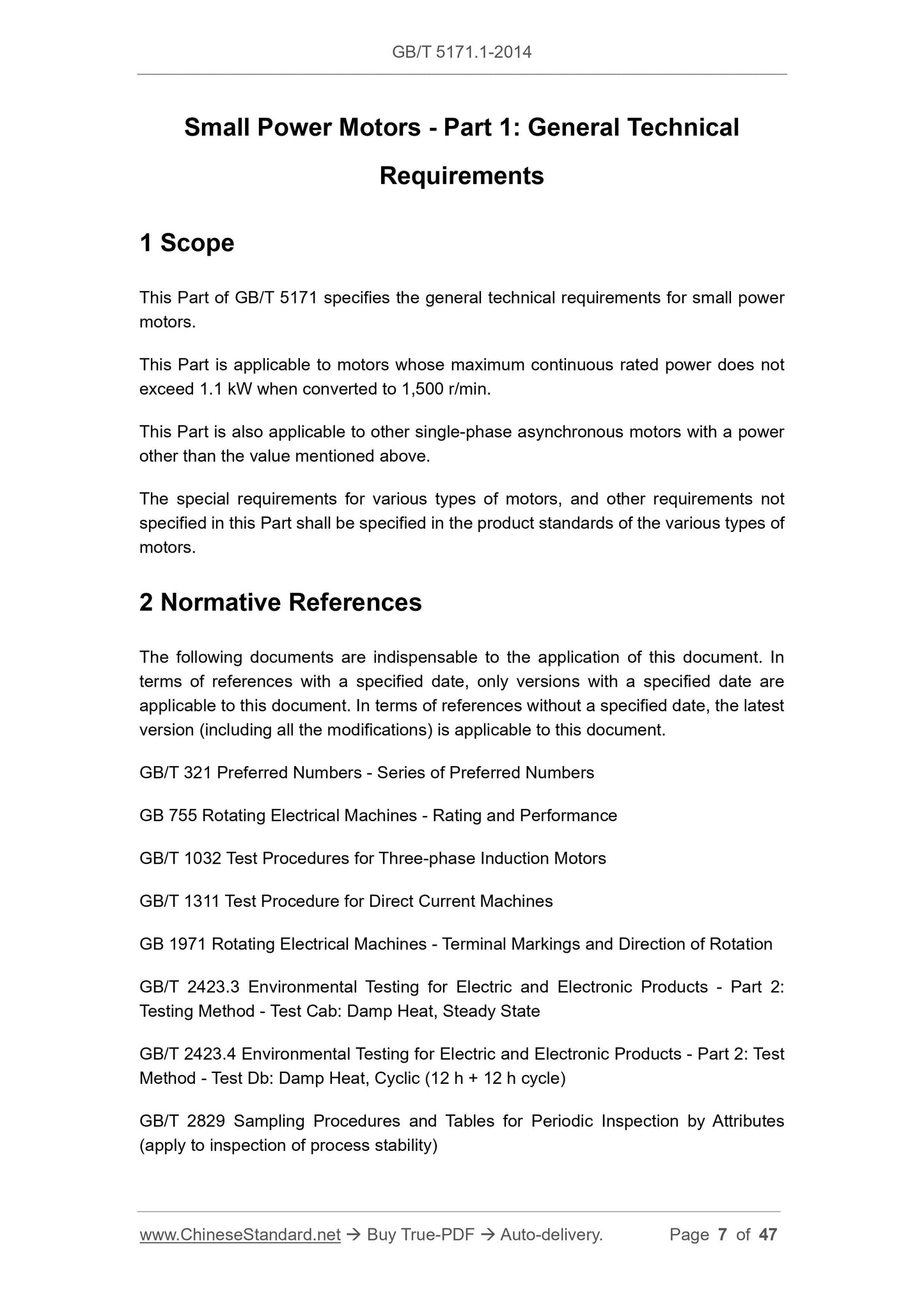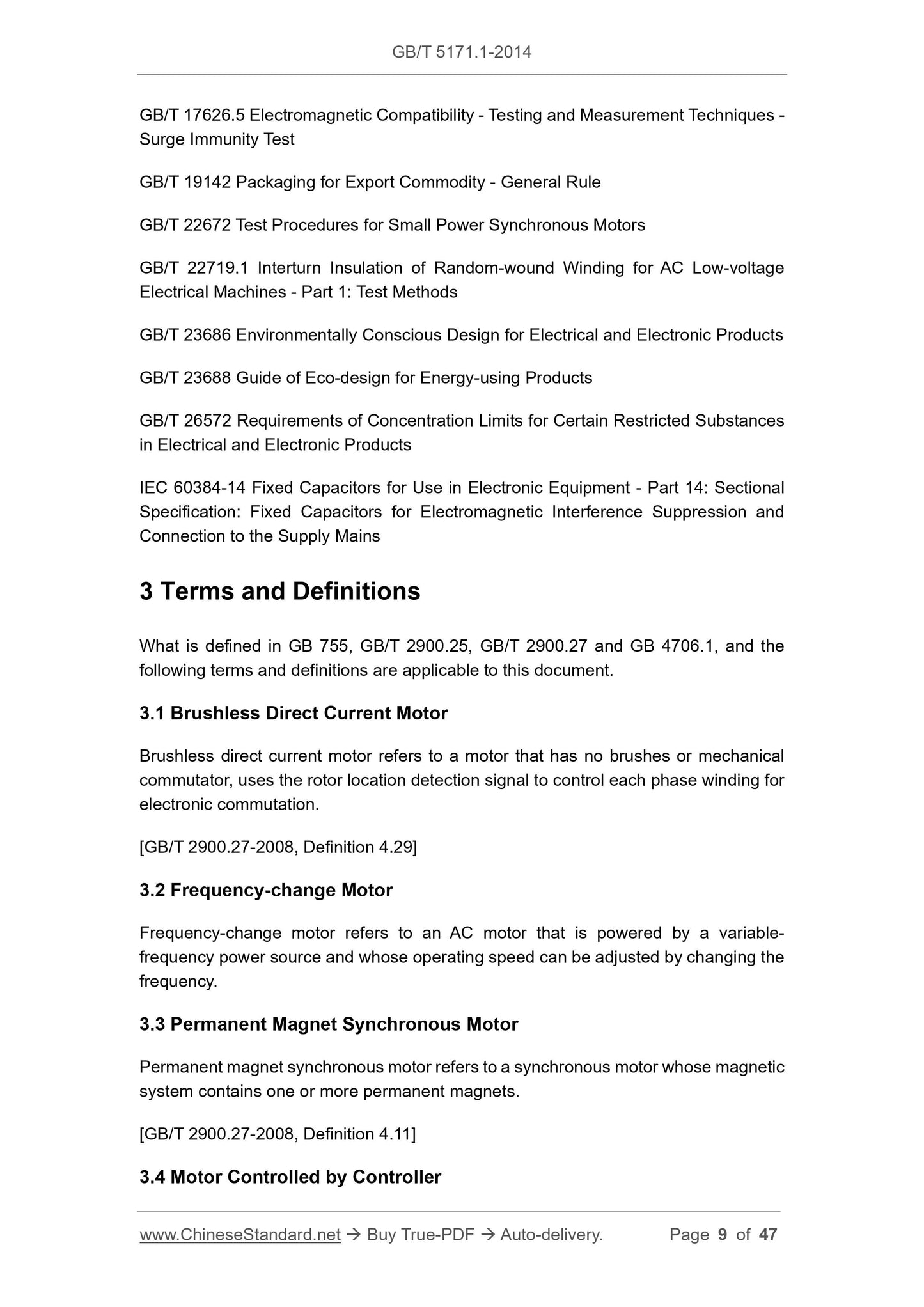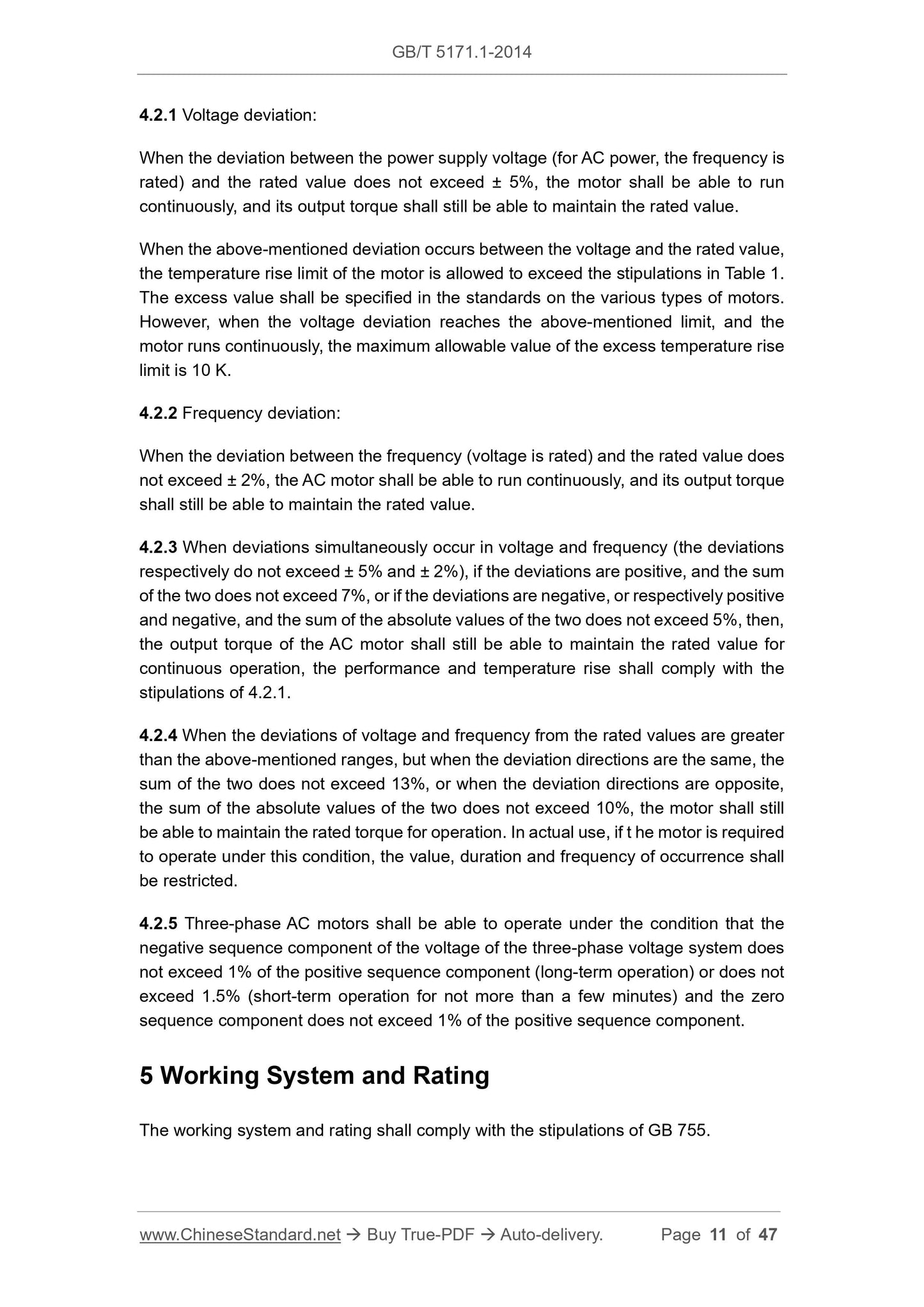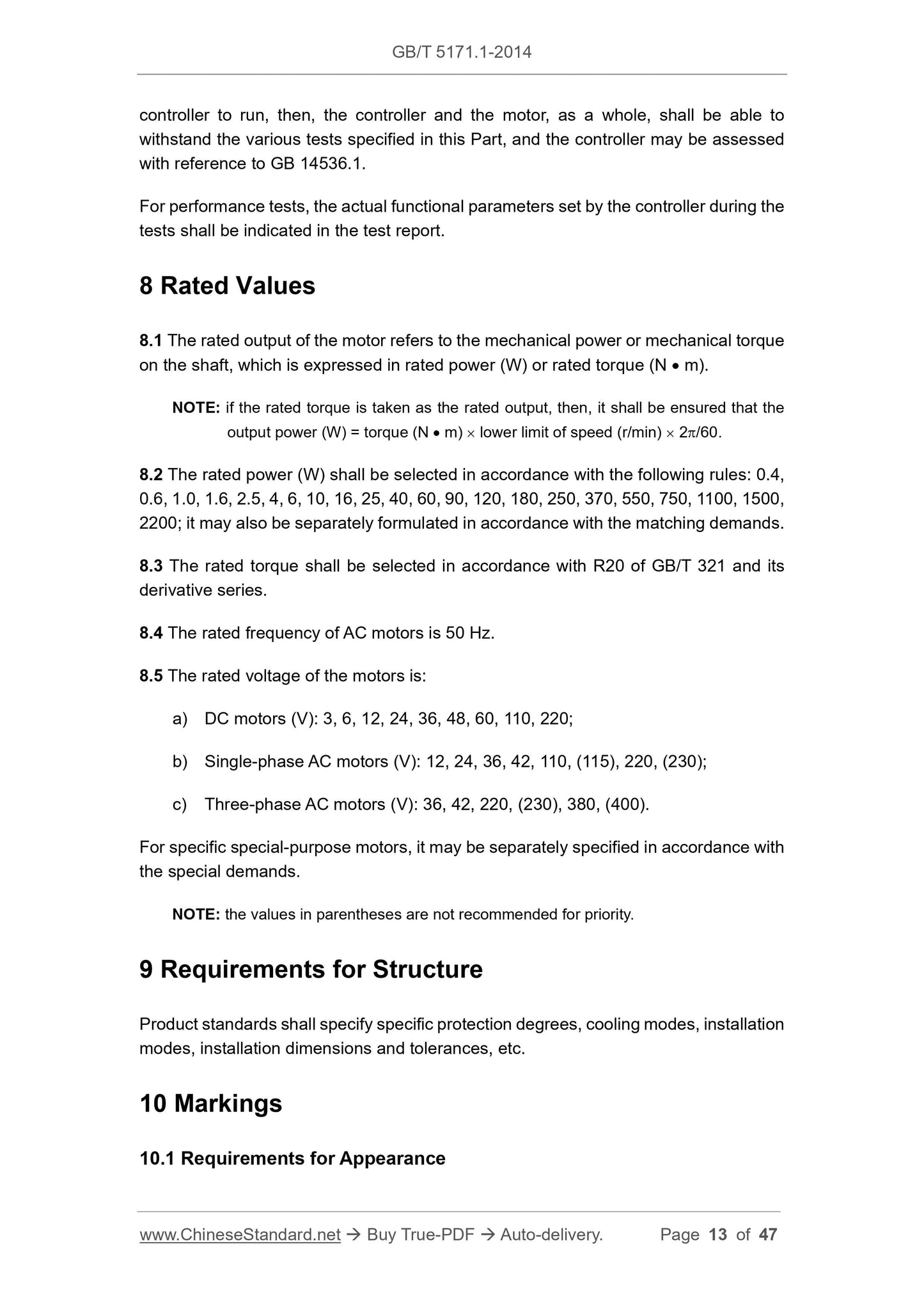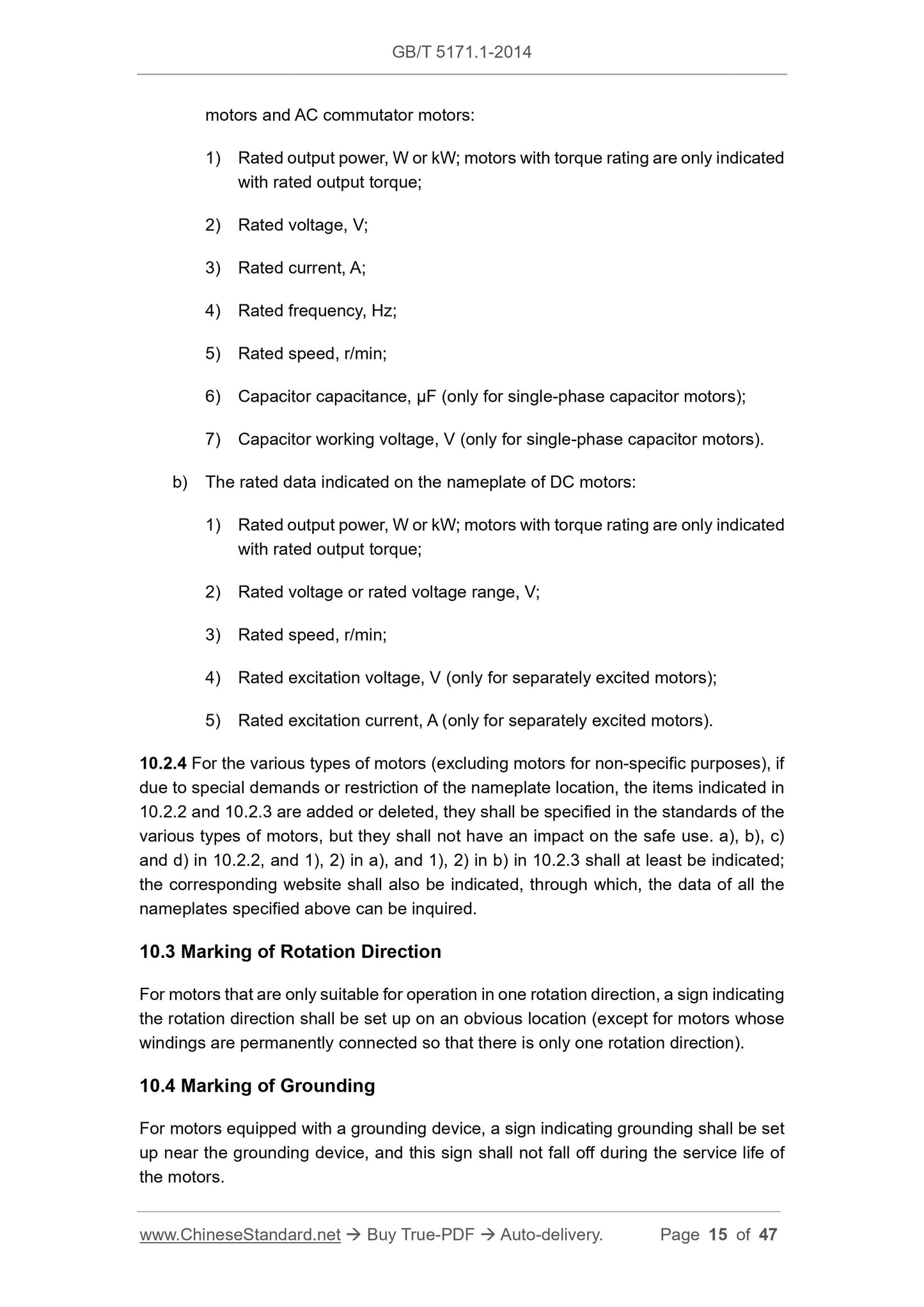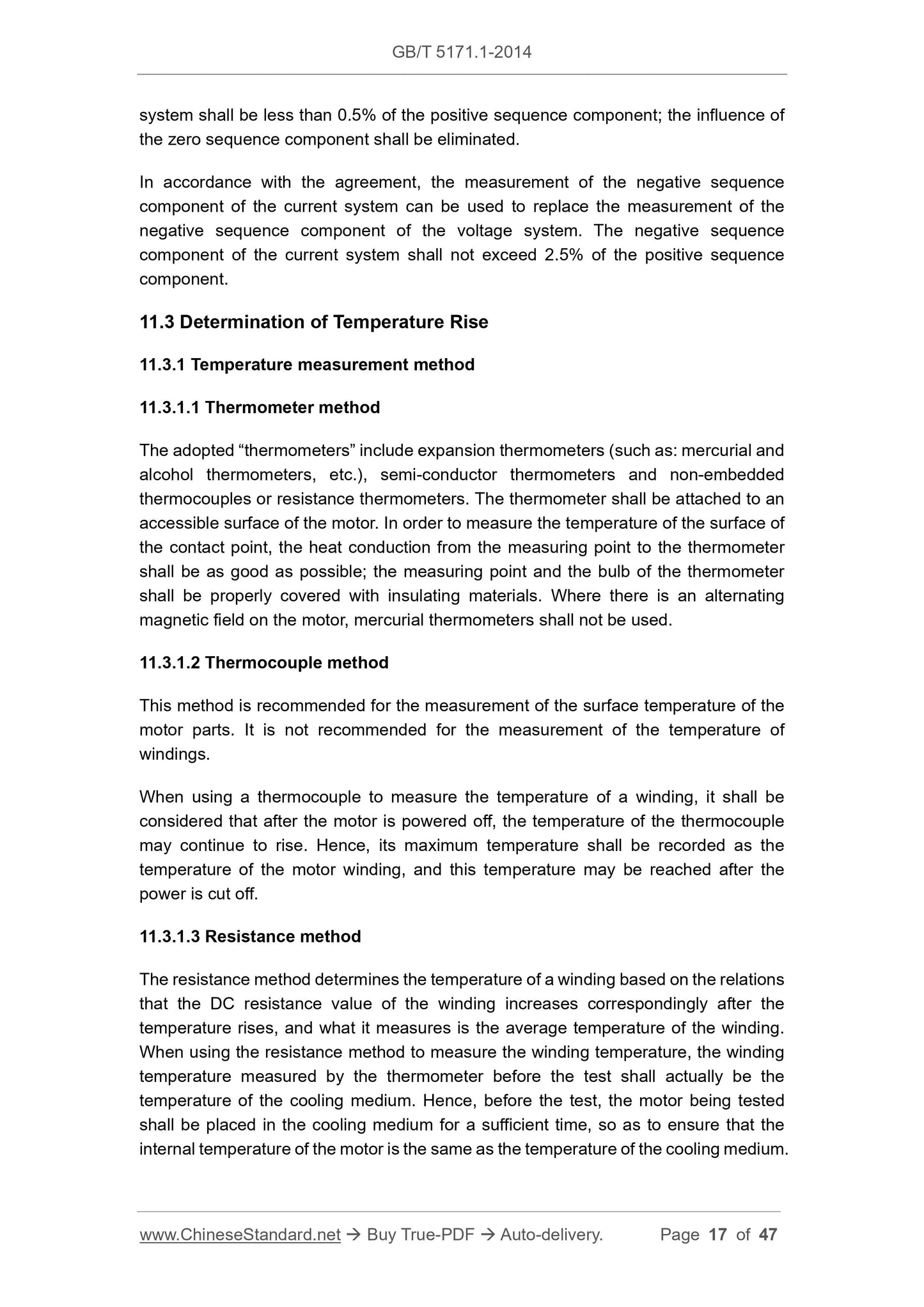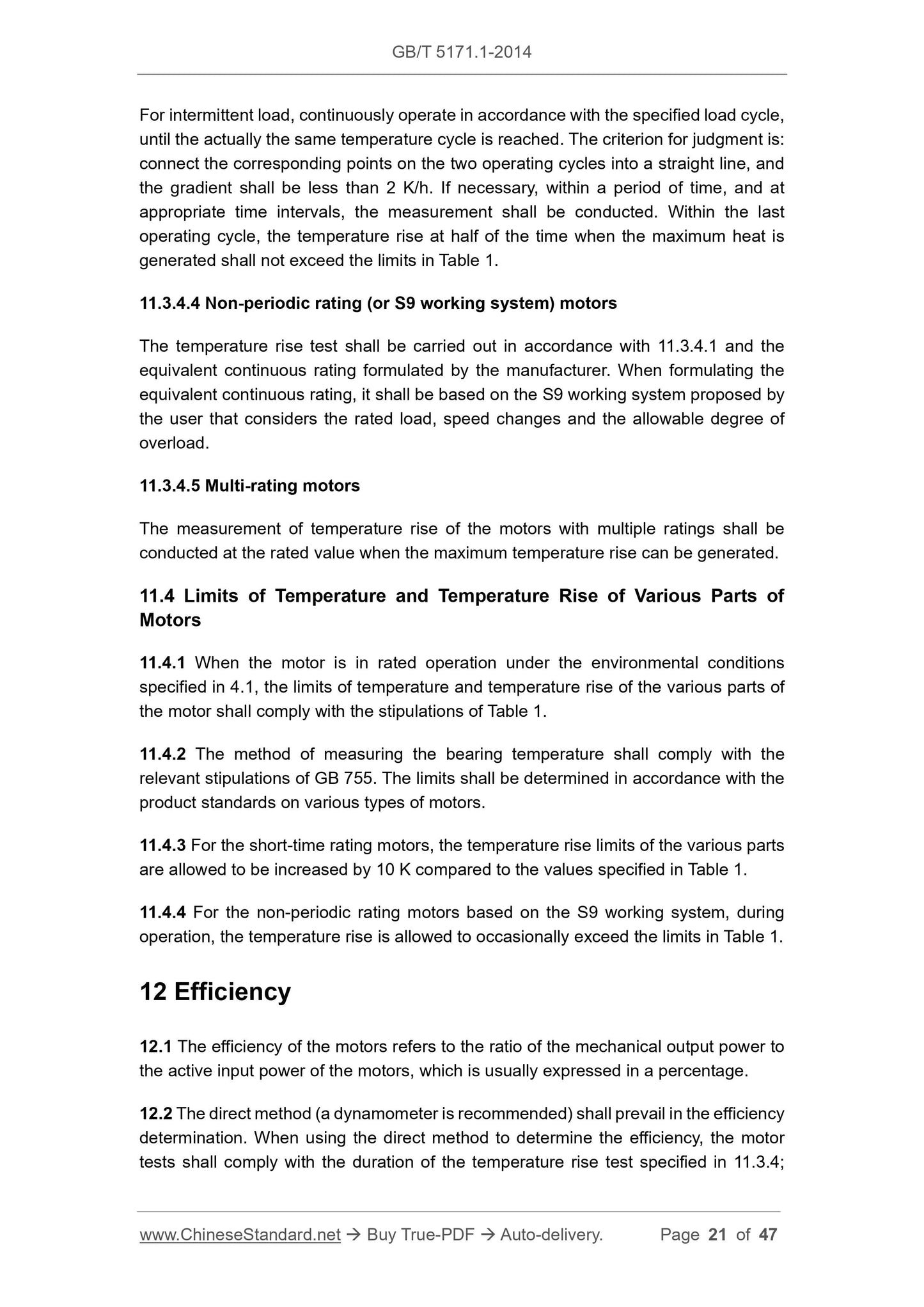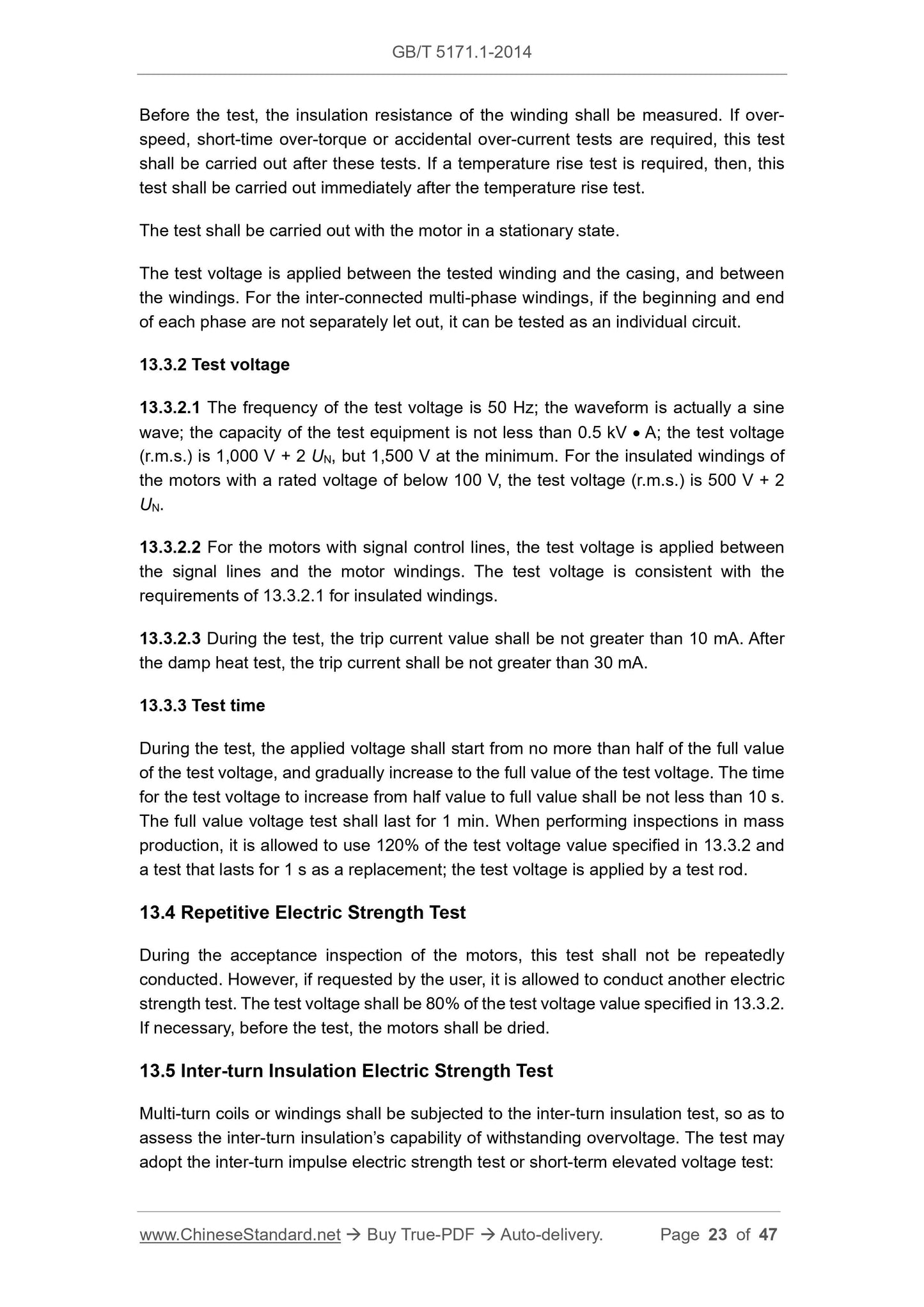1
/
of
11
www.ChineseStandard.us -- Field Test Asia Pte. Ltd.
GB/T 5171.1-2014 English PDF (GB/T5171.1-2014)
GB/T 5171.1-2014 English PDF (GB/T5171.1-2014)
Regular price
$440.00
Regular price
Sale price
$440.00
Unit price
/
per
Shipping calculated at checkout.
Couldn't load pickup availability
GB/T 5171.1-2014: Small power motors - Part 1: General technical requirements
Delivery: 9 seconds. Download (and Email) true-PDF + Invoice.Get Quotation: Click GB/T 5171.1-2014 (Self-service in 1-minute)
Newer / historical versions: GB/T 5171.1-2014
Preview True-PDF
Scope
This Part of GB/T 5171 specifies the general technical requirements for small powermotors.
This Part is applicable to motors whose maximum continuous rated power does not
exceed 1.1 kW when converted to 1,500 r/min.
This Part is also applicable to other single-phase asynchronous motors with a power
other than the value mentioned above.
The special requirements for various types of motors, and other requirements not
specified in this Part shall be specified in the product standards of the various types of
motors.
Basic Data
| Standard ID | GB/T 5171.1-2014 (GB/T5171.1-2014) |
| Description (Translated English) | Small power motors - Part 1: General technical requirements |
| Sector / Industry | National Standard (Recommended) |
| Classification of Chinese Standard | K20 |
| Classification of International Standard | 29.130.39 |
| Word Count Estimation | 31,340 |
| Date of Issue | 5/6/2014 |
| Date of Implementation | 10/28/2014 |
| Older Standard (superseded by this standard) | GB/T 5171-2002 |
| Quoted Standard | GB/T 321; GB 755; GB/T 1032; GB/T 1311; GB 1971; GB/T 2423.3; GB/T 2423.4; GB/T 2829; GB/T 2900.25; GB/T 2900.27; GB 4343.1; GB 4706.1; GB/T 4798.1; GB/T 4798.2; GB/T 4942.1; GB/T 8128; GB/T 9651; GB 10068; GB/T 10069.1; GB 12350; GB/T 12665; GB/T 13126; |
| Regulation (derived from) | National Standards Bulletin No. 9 2014 |
| Issuing agency(ies) | General Administration of Quality Supervision, Inspection and Quarantine of the People's Republic of China, Standardization Administration of the People's Republic of China |
| Summary | This Standard specifies the general technical requirements of small power motors. This Standard applies to conversion to 1 500r/min at maximum continuous rated power does not exceed 1. 1kW motor. This Standard also applies to other single-phase asynchrono |
Share
